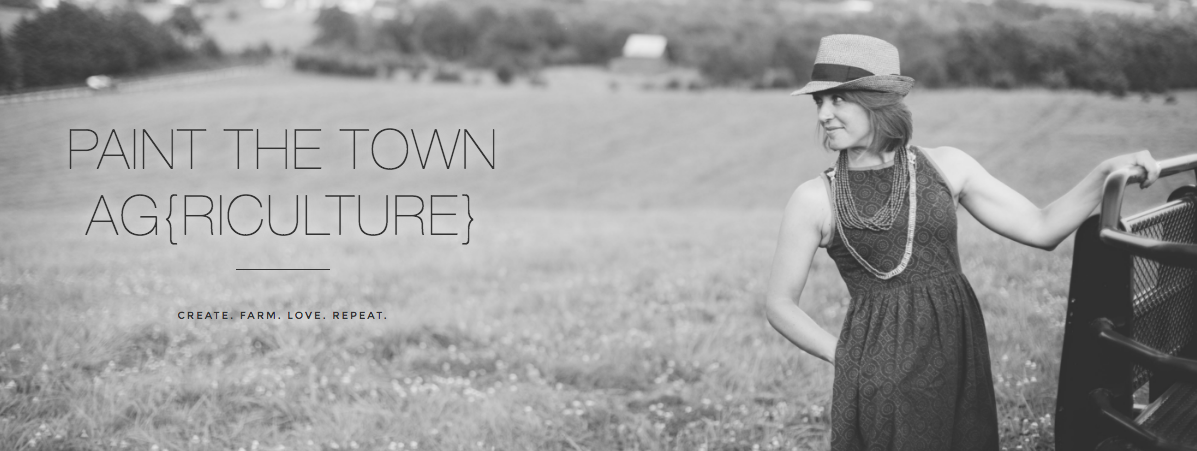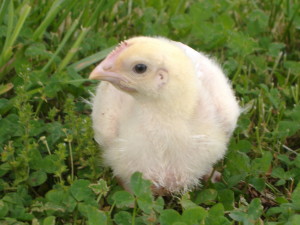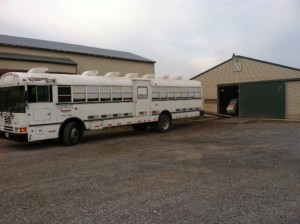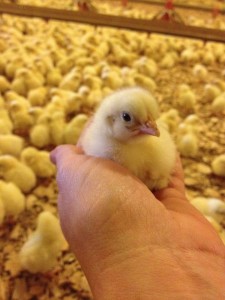#RaisingPoultry :: the hatchery

This blog post was originally drafted and posted by Lauren Arbogast of Paint The Town Ag. It is part of a blog series dedicated to #raisingpoultry. In the series, Lauren walks us through how poultry is raised in the United States – from start to finish.
Lauren and her family raise chickens and cows in beautiful Virginia. Check out the original blog post, and Lauren’s Twitter and Facebook pages.
>>><<<
Every good story has a beginning. Once you get past the book cover and whether you deem the pages read-worthy, your journey begins at the start.
So that’s where we’ll begin.
Regardless of where you fall on the time-honored debate of which came first “the chicken or the egg,” (which ranks right up there with why the chicken crossed the road attempts at humor), for our purpose we’ll start with the small white oval. Give it a few posts, and we’ll loop right back around to how we get those shelled miracles, but until then – let’s start with Day 1 through 21 of eggshell colored existence.
In the poultry industry in the United States – like any good business model – efficiency is the key. Now before you start squawking about the use of efficiency and poultry in the same sentence – hear me out.
As the mother ship in our household, I strive to run the daily affairs with as little stress and strain on the working parts as needed (aka: Farmer & the mini’s). The same is true from my teaching days within my classroom and in the school as a whole. Our environment was one of strength through efficiency. When I speak of said efficiency, I do so with a dollop of kindness and best interest, wrapped up in best practices for the given situation. This, my friends, is what I mean when I say: efficiency.
Poultry + efficiency = a feathered bird raised for human consumption with kindness, humane interest, and best practice
All that said to set up where the story begins.
{In the hatchery}
In the poultry world, there are mature chickens (hens=females and roosters=males) kept specifically to do what Mother Nature has them do best – mate and provide fertilized, hatchable eggs. These eggs contain embryos that will develop and hatch into broiler chickens, or chickens raised for meat – think of these as the muscled up, genetically superior “I’m going to go to the Olympics” chickens. (Note: these eggs with embryos are DIFFERENT from the eggs on the grocery store shelves. More explained later.) The day that these eggs are laid, they take the equivalent of the egg-walking sidewalk out of their chicken house to a human who carefully loads them one at a time onto a large flat egg carton, and the flats are placed vertically on a large cart. These fertilized eggs are kept at their optimal egg-happy temperatures while they are transported via truck on their carts to a hatchery. A hatchery is simply a building dedicated to and equipped with an appropriate egg-hatching environment.
Once at the hatchery, the eggs are tagged and placed according to their birthday in a large (warm) room on specialty shelves that tilt at set times in order to simulate a female chicken, hen, turning her eggs in a nest. The egg has to be tilted so that the embryo won’t stick to the side of the shell, and also so that the shells are warmed evenly. The eggs are incubated – kept warm and happy – at the hatchery until they hatch on their own. It’s like 21 days of the equivalent of a great rocking chair on a beach at just the perfect temperature. Aaahhhhhh…..
As the little peeps instinctively break the air sac in the egg around day 21, they take their first breaths and then gather strength to bust out of their white cave. They emerge slick and sleepy. I can’t imagine being in a fetal position and using ninja-like skills to rock out into the world. Kudos little ones.
It doesn’t take long for the day’s hatching to start peeping at each other, encouraging those still behind eggshell, and talking to their new cousins. Call it a family reunion of mass proportion. Someone better print t-shirts.
I can see it now in black lettering on yellow shirts: “Peep Family Reunion – we make bustin’ out look good.”
Within a few hours, their little fluffy fluff (it’s not exactly feathers) will have dried and bulked them up twice their size. Did I say they were fluffy? IT’S SOOO FLUFFY! {Sorry about the screaming in Despicable Me style, but it is so true. See picture below.}
While at the hatchery, they are also given the equivalent of their Kindergarten vaccines. We wouldn’t want them going to school without proper protection! The chicks are kept warm in shallow boxes, celebrating family style, while they tell each other their birthing stories. Peep peep.
Once dry and ready to roll, the boxes full of fluffiness are loaded onto a climate-controlled truck (It used to be a retrofitted school bus!) and driven to their new address. When we had the aforementioned school bus, we used to say that the peeps were coming to school. (hehe)
So begins our story of how the egg came before the chicken. Next step is unloading these peeps into their new house! Tune in to find out what the houses look like, how they are set up, and what happens on day one of dorm life.
Have questions specific to this step of #raisingpoultry? You are welcome to submit respectful comments or questions below, or use the social media channels at the beginning of this post to connect.


